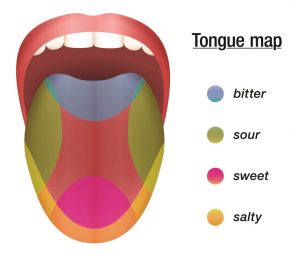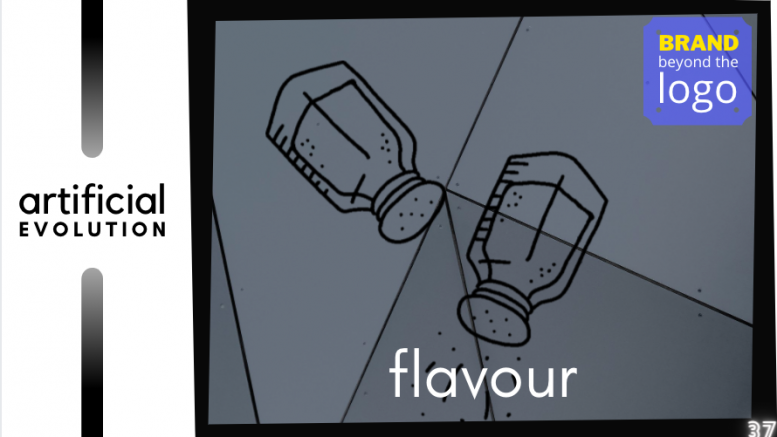The brand experience.
In continuation of our “Brand beyond the logo” series, this week we discuss how brands use our sense of taste to enhance experience, create stickiness and subconsciously influence the end user. To read part 1 of this series on audio, click here. To read part 2 on touch and haptics, click here and to read part 3 on scents, click here
Warning: Please don’t smoke. If you do, you suck. Literally.
Most cigarette companies do sampling at popular bars. Young girls and boys are often enticed with a daily allowance of about 500 – 1000 rupees and are given a few cartons in their bag (very similar to the RedBull sampling from college) to be distributed for free to bar patrons.
Based on the success of Dunhills (a relatively new international entrant), tobacco companies had realised that the market of menthol cigarettes was growing specifically in metros. Marlboro (who already has an international menthol variant) and ITC leapt into creating the ‘switchable’ menthol brand based on this consumer trend.
Classic, an ITC brand, did something of this nature about 8 years ago. At an up and coming bar in Lower Parel (that rhymes with, uh… Brocial), they offered a 20 pack of Classic Ice Burst to anyone willing to take one.
I was there. I took a pack.
Long story short, the sample was the mintiest thing I had inhaled. Stronger than toothpaste, this taste was created for isolating the ardent menthol lovers from the rest. I continued to purchase this product for some time. (Again, I’m a terrible person for smoking, please don’t do it). Over time, the menthol reduced, the stick got smaller and price continued to rise. Sales continued to go up with men and women buying into the trend of menthols. Very soon, every single sub-brand started their own menthol switch variant.
Based on, well, “somewhat empirical evidence” (me, friends, co-workers), there was a clear inflection point. I noticed that regardless of gender or age, customers tend to smoke more menthol cigarettes per session. The added taste of menthol made the cigarette feel ‘lighter’ than the typical non-flavoured tobacco sticks. Users in some cases double or tripled their average consumption per session.
Cigarette companies had found a way to make cigarettes more addictive. And taste was their Ace in the hole.
Everything you know is a lie!
I mean, not EVERYTHING.

But this tongue flavour profile thing we were taught in school.
Quite untrue.
In one of the most detailed accounts of this myth, the American Smithsonian Museum’s website discussed the neurobiology of the tongue – it’s relation to taste and how sensory perception is actually much more intertwined.
TL;DR: You have over 10000 taste buds on your tongue. You have more than just 5 flavour profiles.
Tastes like brand building
Dio USA, one of the most interesting experience design companies I’ve come across writes on their blog:
“When scientists talk about taste, they’re talking about an integrated experience where scent, suggestion and memory meet your taste buds. They’re not just talking about the nerve endings in the mouth and tongue. That’s because there’s a deeper connection to smell and taste than may meet the eye.
Most scientists believe there are many more flavors we can detect than the five core tastes we mapped out in our childhood. Those taste receptors don’t work alone, either. There are many signals being received by the taste centers in our brains”
The ability to remind your customers of your company through taste is an opportunity to build brand affinity. Emotional marketing can help customers feel more invested in their organization, but sensory branding like using a multitude of flavours or sticking to the same unchanged flavour can be invaluable for business growth. By defining your sensory brand, you can create an experience that goes beyond your products and services. This provides orientation and helps with longevity, because your customers want to belong to your brand and be part of it. This loyalty gives your brand a distinctive sensory appeal that is not emulated by competing brands. This means that no matter what a brand has to say about its products, it is the associated brand memory that dictates future decisions and determines the lasting impression of that brand.
Is taste really that important?
Yes. Yes, it is.
To further explain my point, I’d like to present to you 2 short case studies on when taste influenced (or sometimes changed) consumer behavior:
The Good
When KFC came to India, one of the least likable items was the chicken-wings. It was the same batter and spice mixture, but just didn’t vibe with the audience. Over time, the spice quotient rose. Around this time, to hedge their bets, they also launched Popcorn chicken – tiny shreds of chicken, batter fried and mildly spiced. This was their gold star. There was a time between 2010 and 2016 where every 3rd customer of KFC bought the popcorn chicken. It had just the right spice mix – with the added advantage of being boneless. Finally, they launched the Spicy Grilled chicken to appeal to the more health conscious customer. All three products are still available today.
ProTip – If you like spicy food, try the KFC in Hong Kong.
It is… spec…(chef’s kiss) tacular.
The Bad
Probably one of the most infamous case study of the 80s and 90s, Coca Cola made some poor decisions. In the early 80s, blind taste tests were a rage and customers had started to prefer the sweeter, syrupy taste of Pepsi. A new formulation of Coke (also called Coke II or more famously, New Coke) was created. The new taste was much more aligned to the audience preferences in focus groups. Turns out, the average customer hated it. So much, that there were petitions filed to get the original coke flavour back. After only 3 months of release, the product was pulled from shelves due to backlash. The company released their original flavoured sugar drink and saw a boost in sales almost immediately.
P.S. This story is so famous, Coca Cola not only acknowledges it, but hosts it as a readable article on their OFFICIAL INTERNATIONAL WEBSITE
But I’m not a food brand OR I don’t work with food brands
Neither does Ikea. But their Swedish meatballs have found global appeal. Neither does OnePlus but they offered freeze dried ice-cream to promote the OnePlus 9. Flavours can be the protagonist, the supporting actor, the advertiser or the theatre artist that allows the audience to interact with them.
Flavours are your secret weapon. Surprise your audience. Change to a specific green-tea brand for your employees or create your own type of dry snack for when clients visit.
They’ll love it.
More importantly, they’ll remember it.
Cheers.
The views and opinions published here belong to the author and do not necessarily reflect the views and opinions of the publisher.



Be the first to comment on "Brands beyond the logo: Part 4 – Brands and flavours"